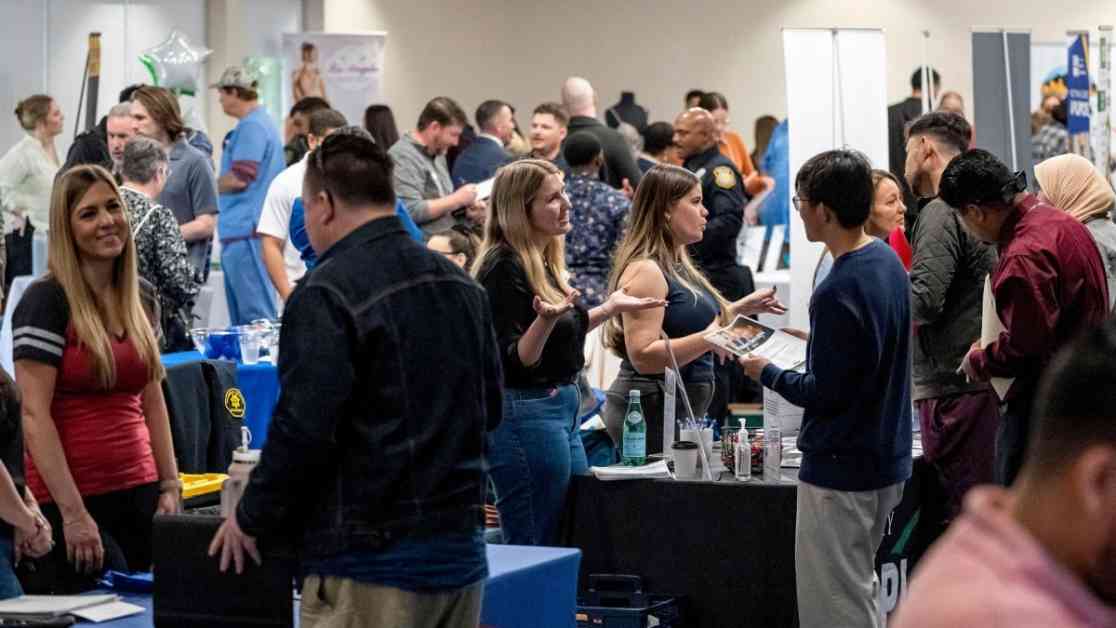March US Payrolls Increase to 228,000, Unemployment Rate at 4.2%
The latest report from the Labor Department delivered some good news for the US job market, with March seeing a significant increase in nonfarm payrolls to 228,000. This number surpassed expectations, beating the Dow Jones estimate and showing a marked improvement from the previous month. However, the unemployment rate also rose slightly to 4.2%, signaling a complex economic landscape.
A Positive Surge in Job Growth
In March, nonfarm payrolls saw a substantial uptick, jumping to 228,000 from the revised 117,000 in February. This surge exceeded the Dow Jones forecast of 140,000 jobs, indicating a robust growth trend in the market. The health care sector emerged as a key player in this expansion, adding 54,000 jobs during the month, aligning closely with its 12-month average. This steady growth in employment painted a positive picture of the overall job market.
Challenges Amidst Growth
Despite the encouraging job numbers, the unemployment rate climbed to 4.2%, slightly higher than the expected 4.1%. This increase was accompanied by a rise in the labor force participation rate, hinting at underlying complexities in the economic landscape. The backdrop of uncertainty stemming from President Trump’s tariff announcements added a layer of caution to the market, with fears of a potential global trade war looming large.
Expert Insights and Market Response
Lindsay Rosner, head of multi-sector fixed income investing at Goldman Sachs Asset Management, highlighted the significance of the job report in allaying concerns about a weakening labor market. However, the focus remained on the broader implications of the tariff policies. President Trump’s tariff announcements have already triggered retaliatory responses, fueling an atmosphere of market volatility and caution.
The Market’s Reaction
In response to the job report, stocks displayed a mixed reaction, with futures tied to the Dow Jones Industrial Average showing some fluctuation. Wall Street remained on edge due to the tariff-related uncertainties, leading to a sell-off and increased interest in fixed-income securities. The market’s response underscored the delicate balance between positive job growth and external factors influencing economic stability.
Looking Ahead
While the March numbers showcased a resilient labor market, with health care and other sectors driving growth, the shadow of tariff-related anxieties loomed large. The revisions in job counts for January and February, signaling a downward trend, added a layer of complexity to the overall economic outlook. The coming months will be crucial in determining how the job market navigates through these challenges and maintains stability.
A Comprehensive View
The March job report provided a holistic view of the labor market, offering insights into sector-specific growth areas, wage trends, and broader economic indicators. While the headline numbers painted a positive picture of job growth, the underlying uncertainties posed by external factors like tariffs remained a cause for concern. As the market continues to navigate through these challenges, the resilience of the labor market will be put to the test.
In conclusion, the March job report offered a nuanced perspective on the state of the US labor market, showcasing both strengths and vulnerabilities. The interplay of job growth, wage trends, and external factors like tariffs highlighted the intricate dynamics shaping the economic landscape. As the market adapts to evolving conditions, the March numbers serve as a benchmark for assessing the resilience and adaptability of the US economy.














